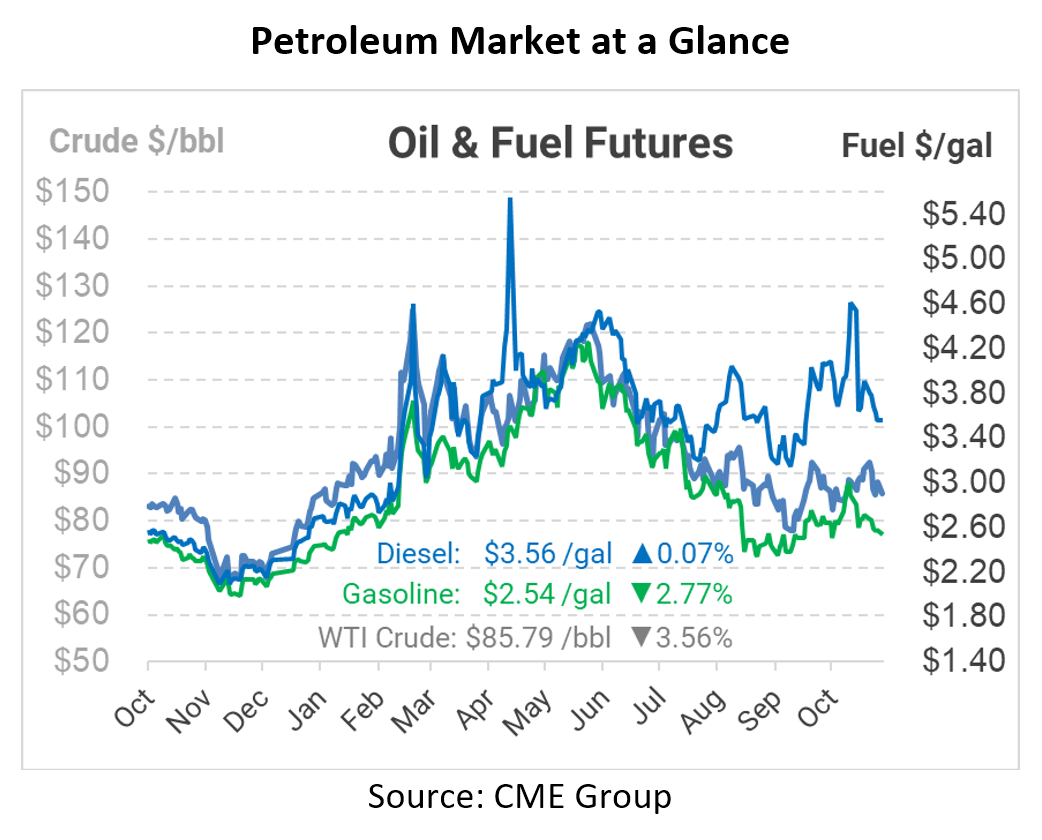
Price Cap on Russian Oil – What’s Next?
While embargoes on Russian oil have been a looming factor impacting markets, so far it has been too ambiguous to really impact fuel prices. Markets are pricing embargoes coming up, crude oil bans, and more, but Russian oil is currently still flowing freely to Europe. So what are the key dates coming up, and what does that mean for energy markets?
Dec 5 – Crude Oil Sanctions (Oil Logistics)
On December 5, the EU’s next round of sanctions will go into affect, banning the import of Russian crude oil and preventing European tankers and insurance companies from facilitating Russian oil sales unless the price is below a cap. However, the cap has yet to be set. This week, EU President von der Leyen commented that the EU is “ready to go” for setting a price cap, but there’s been plenty of speculation. Between now and Dec 5, be on the watch for the price cap threshold.
This week, US Treasury Secretary Janet Yellen added that the US is “happy” if India and China continue purchasing Russian oil, as long as it is below a price cap or moving on non-western barges. A JP Morgan analysis notes that Russian, Indian, and Chinese fleets will be enough to continue moving Russia’s oil with minimal disruption. The major question remaining is how much oil China will import, given weak demand due to COVID lockdowns. But the recent hike in Chinese export quotas suggests that China could bring in crude oil, refine it, and export it a refined fuels to other countries.
Feb 5 – Fuel Sanctions
In February, the EU’s embargoes will expand to include diesel fuel as well. The EU imported about 1.3 million barrels per day (MMbpd) of diesel and other refined fuels from Russia in 2021. For context, that’s over 25% of the US’s daily diesel demand. Those Russian diesel supplies will have to be routed elsewhere, and the EU will need to instead import more from Asia and the US.
Increasing diesel imports from abroad may be difficult for Europe. The US and EU are already competing for scarce diesel supplies – earlier this year, diesel tankers bound for Europe were re-routed to the US to capitalize on rising prices in the Northeast. US exports to Europe have increased this year, but diesel exports have declined over the past few weeks. The US produces roughly 5 MMbpd of diesel, and consumes about 4 MMbpd. The rest is typically exported. If diesel exports rise significantly above 1 MMbpd this year, it could leave the US without much spare diesel; alternatively, low exports here could mean diesel challenges in Europe. Either way – expect some volatility as both sides of the Atlantic compete for precious diesel supplies.
This article is part of Daily Market News & Insights
Tagged: Price Cap 2022, Russian oil
MARKET CONDITION REPORT - DISCLAIMER
The information contained herein is derived from sources believed to be reliable; however, this information is not guaranteed as to its accuracy or completeness. Furthermore, no responsibility is assumed for use of this material and no express or implied warranties or guarantees are made. This material and any view or comment expressed herein are provided for informational purposes only and should not be construed in any way as an inducement or recommendation to buy or sell products, commodity futures or options contracts.






